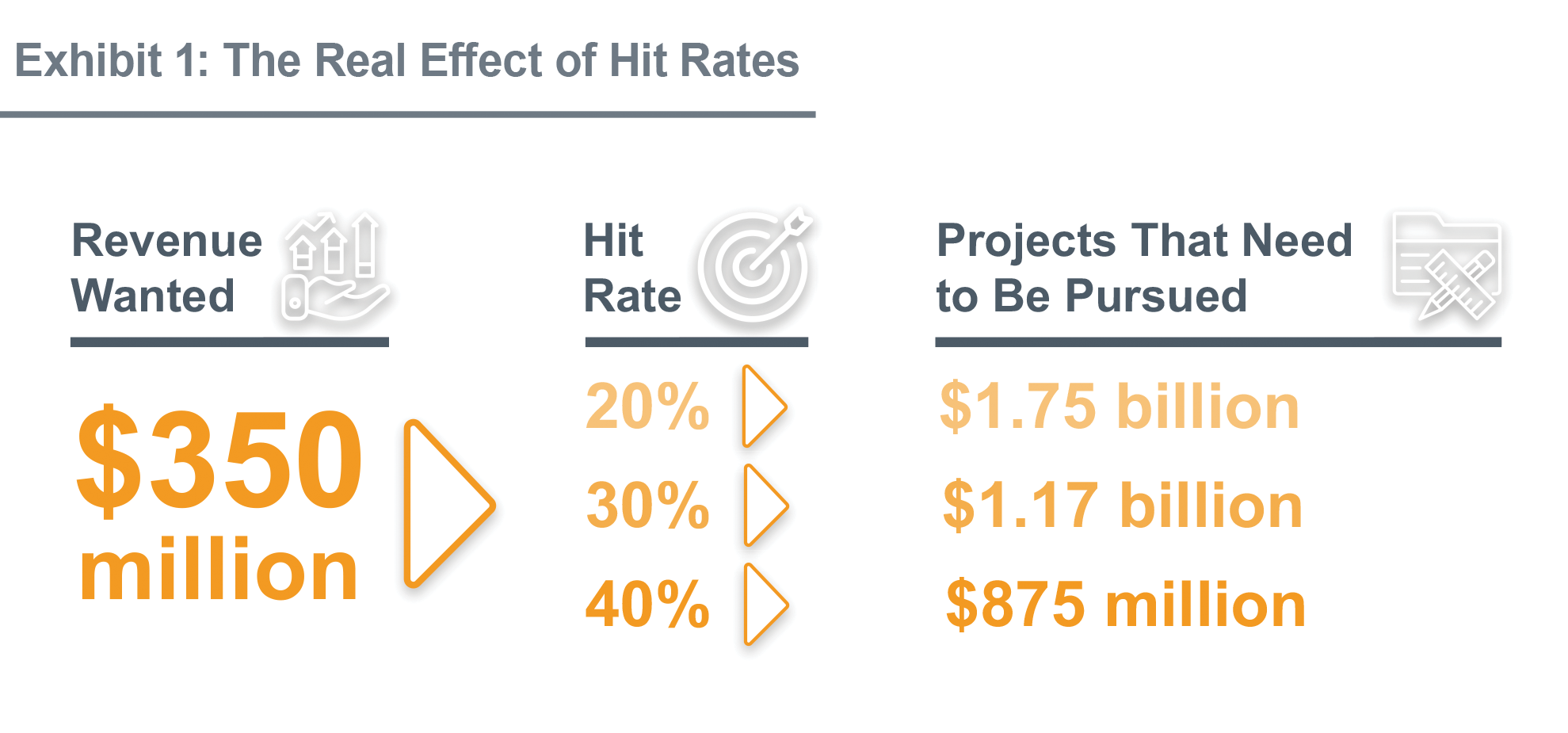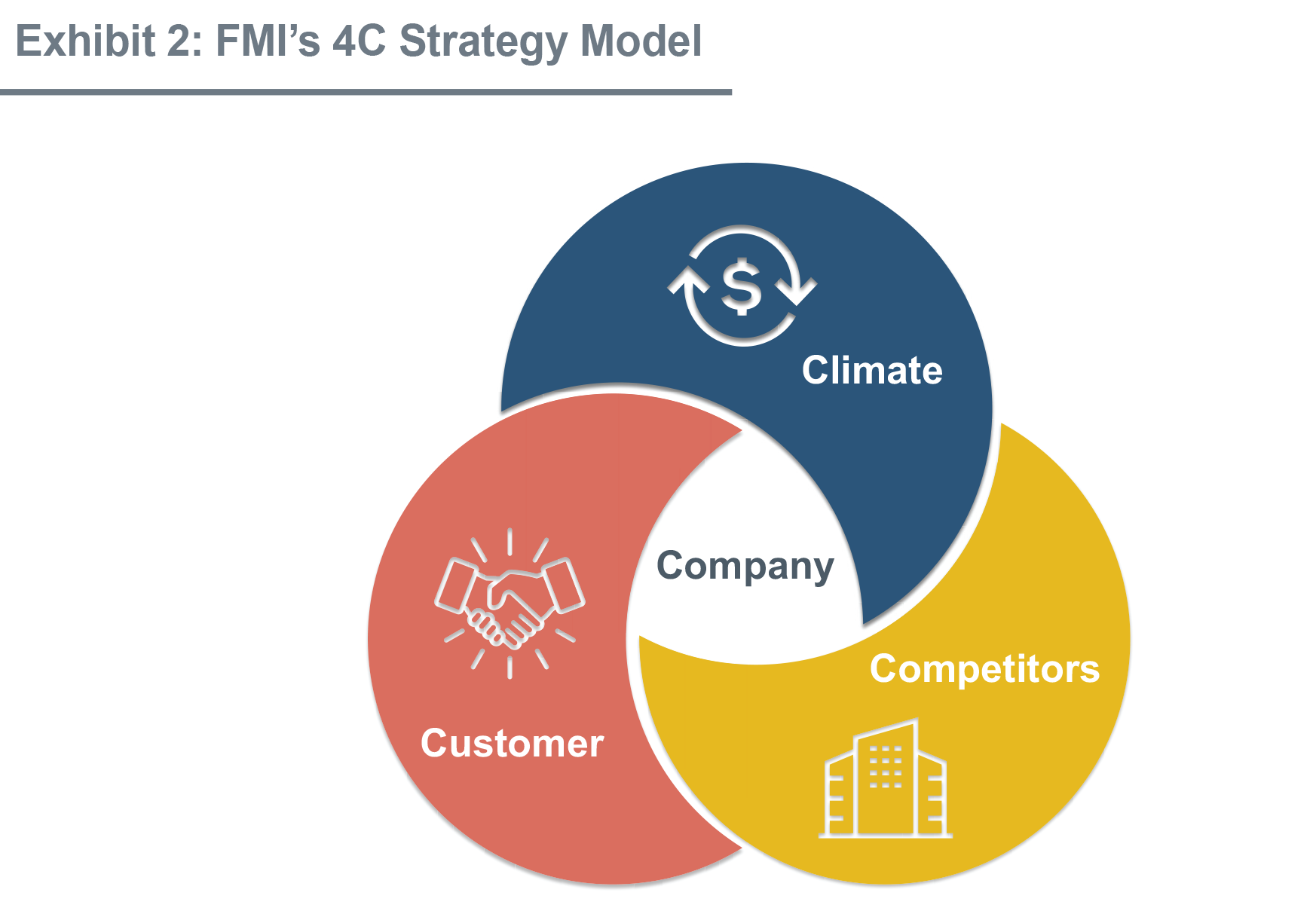Don’t Waste Money Chasing Opportunities: Create a Winning Business Development Strategy

Getting smart about your go-to-market strategy, picking the right customers and positioning yourself to win will help your company gain profitable market share without overspending in the process.
Construction companies spend millions of dollars chasing projects that are never won. This costly and time-consuming process can leave some contractors feeling as if the system is broken. It is in the client’s best interest to have competition bidding on a project, but the number of bidders varies greatly depending on the owner and the request for proposal.
There are usually differences between how owners and contractors view the project pursuit process. From owners’ perspectives, multiple teams chasing the project can bring innovative ideas, ensure more competitive prices and give them more options for project partners. This helps owners understand the differences between competing teams and ultimately leads to more informed decisions. If an owner is experienced, he or she will likely know what to look for. If not, having multiple contractors pursue the project provides a broad spectrum of options and insights, increasing the chances of a successful project.
Contractors view the process differently. Often, competing for jobs can seem like a way to drive down prices and blur the true focus of the project. Too often, the project pursuit process drains contractors’ time, energy and capital.
Ideally, contractors seek one-on-one relationships with owners, which helps them have a voice in framing project needs. Work is won by demonstrating value, scheduling advantages and differentiators other than costs.
Chasing work is a significant investment of resources for contractors―time and money that could be spent creating better project outcomes by improving collaboration in the project bidding and award process.
Labor Shortages Hurt the Industry
A lack of qualified talent, both in the field and office, is encouraging contractors to be more selective about which projects to pursue. FMI’s recent talent study shows a lack of skilled field leaders is a key risk for companies already struggling to fund and staff projects amid labor shortages, materials supply issues and economic uncertainty. With 93% of those surveyed saying they couldn’t find the right talent, the constraints are putting more pressure on contractors to focus on core competencies and become more selective about which projects to pursue.
Increasingly, contractors need to juggle teams or personnel when they’re pitching business. Owners expect the best teams to be available, but sometimes those teams may be otherwise engaged by the time owners make decisions. Given this, some owners may be willing to pay a premium for top-quality teams or having specified people available to them when they want.
The same can be said for innovative ideas presented during the project proposal stage. Naturally, customers want the best ideas for building their projects. Contractors, however, can’t afford to invest the time and talent to generate and implement highly innovative ideas on one specific project; they need to be able to leverage those ideas across projects to control costs.
There are only so many business development, preconstruction, estimating and operations hours available to invest in project pursuits. As a result, not all projects get the level of attention that they deserve. Contractors must make smarter strategic choices regarding which customers and projects to pursue.
The Real Impact of Hit Rates
Small changes in hit rates (i.e., rate of winning a project) have dramatic impacts on contractors. Exhibit 1 shows the impact of changing hit rates for a company from 30% to 20% and 40%, respectively. If the company wants to end up with $350 million in work and at a 30% hit rate, it will have to actively pursue $1.17 billion in work. If the hit rate drops to 20%, that number goes from $1.17 billion to $1.75 billion, or almost a 50% increase in the number of projects needed to pursue.

Finding that much quality work to bid is daunting enough. Finding the time to estimate the projects, bringing in innovative ideas and committing your best teams can be downright overwhelming.
If the hit rate can be improved to 40%, which is a high bar for most contractors, then the company would only need to chase $875 million in work, or about 75% of what is needed for a 30% hit rate.
Hit rates can create the pressure to continuously bid to win more work. It is easy to get trapped in that cycle of trying to win sufficient work to keep the company busy, neglecting project selection criteria in the chase.
Improving Your Bid Process
Winning profitable work starts long before you pursue a client or a project. Here is a quick list of things you can do to make sure you’re pursuing the right work:
- Set the right strategy. It all starts with strategy. What slices of the market do you want to target? Who are the right customers? What services do they need, and how do your offerings set you apart from the competition? No one chases the complete commercial or institutional markets anymore. Contractors pursue market slices. You might want to target community colleges that are expanding their campuses, for example. Or if you excel with big concrete work, you may want to focus on commercial projects that will require parking garages.
- Base your decisions on facts. Understand which market segments are growing, which are cooling, and which have already peaked. This is not to say you can only chase growing market segments, but it does alter the strategies needed to win market share.
FMI uses a 4C model to illustrate the context of profitable growth (see Exhibit 2). Start with the business climate in which you are operating (e.g., demographics, per capita income, government regulations, research and development, economic cycles, etc.), and then dig into the changes, expectations and needs of customers. Since they are the ones who will be buying your services, find out what criteria they use to select contractors. Ask them about the competition (the third C in the model) and find out where your competitors excel and where there are opportunities to improve.
The last C in the model is your company. Analyze where you are best-in-class, what you do similar to your competitors, and where you need to improve.
The 4 C’s come together to create the context behind crafting your go-to-market strategy. Simply put, that strategy identifies which market slices you will pursue, the right customers to target, your ideal projects and your market differentiation.

- Build a compelling story. You don’t have to be totally differentiated from your competition. The key is identifying things you currently do (or could expand) that would create more value for your customers. If you simply match the competition already in the market niche, expect heavy price competition from entrenched contractors.
You need a story that explains to customers why you are the right choice for their projects. Back up your story with proof that you really can deliver that additional value and guess what. Customers will listen.
- Build your go-to-market strategy. This strategy will help you define which customers to target and connect with before a request for proposal hits the street. This is when they will be the most open to meeting with you and talking to you. You need to get in early and deep to create an advantage to win the project.
- Think like the customer. What is the same, and what is different from the customer’s other projects? What is the project’s business purpose? Who are the key end users who need to be included in the decision? What is something the customer has struggled to get other contractors to fully focus on?
Find out what the customer wants and why it is so important. What value do you bring that the competition does not? Value, by definition, is something that a person is willing to spend extra to obtain. See if you can find something the customer values that your organization can deliver better than anybody else.
Remember: It’s in the customer’s best interest to have multiple contractors chasing a project. You don’t want to be just a number. Find ways to stand out and add value for your customers and build your strategy to win around that value proposition.
- Align your time with your strategy. Build organizational capacity that’s centered on a key focus, such as spending time with customers in advance. Everyone is busy, so even when you do a good job of targeting specific customers, a lot of other things will be vying for their attention. The tactical things take time away from the strategic moves that are needed to put ourselves in a winning position.
Work Smarter Not Harder
Today’s business environment is different from just three years ago, forcing engineering and construction firms to research markets, existing and potential customers as well as competitors more carefully. Failure to pay attention to changes in legacy markets or new opportunities could cost companies their existences. Understanding client behaviors―what makes them tick, how they make decisions, how they buy work ―has become a critical element in today’s business dealings, particularly in the design and construction industry where people and relationships are key.
So why throw millions of dollars away trying to win bids and customers? Chasing work is a necessary yet expensive proposition for contractors, but the firms that are smart about their strategies are generally the most successful and profitable. Creating clear strategies about how you go to market, picking the right customers and positioning yourself to be competitive will help set up your company to gain profitable market share.